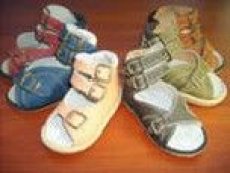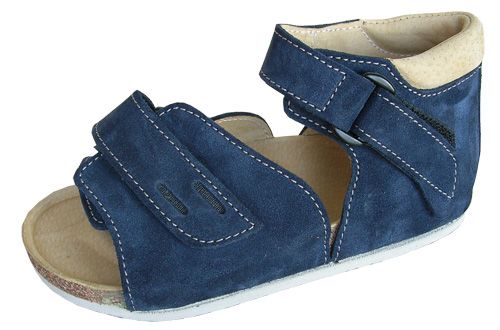Medical expert of the article
New publications
Why do you need orthopedic shoes?
Last reviewed: 08.07.2025

All iLive content is medically reviewed or fact checked to ensure as much factual accuracy as possible.
We have strict sourcing guidelines and only link to reputable media sites, academic research institutions and, whenever possible, medically peer reviewed studies. Note that the numbers in parentheses ([1], [2], etc.) are clickable links to these studies.
If you feel that any of our content is inaccurate, out-of-date, or otherwise questionable, please select it and press Ctrl + Enter.

Orthopedic shoes are specially designed shoes that provide support to people who suffer from pain in their feet, ankles, or any other part of their legs. Historically, orthopedic shoes were designed with functionality in mind rather than fashion, although today they are generally more attractive than they used to be. So, why do we need orthopedic shoes and who can benefit from wearing them?

Orthopedic shoes for all ages
Although many people believe that only older people can wear orthopedic medical shoes, they are worn by people of all ages - this is a fact.
Typically, the main function of orthopedic shoes is to provide additional support for the feet and ankles.
There is no need to be afraid of the “ugliness” of shoes or boots - the design of orthopedic shoes varies depending on the nature of the specific problem of the owner. For example, different types of orthopedic shoes are used to help with such conditions as enlarged bunions, heavy legs or low arches. There are different designs of orthopedic shoes that will work effectively for all types of feet and will help solve any foot problems.
Orthopedic shoes for children and adults
Wearing orthopedic shoes is a great idea when a person has pain when walking. It is needed when walking in regular shoes causes fatigue and pain in the muscles or bones of the legs. Since people of all ages and genders can experience foot pain, orthopedic shoes have been developed for children and adults.
Along with shoes, there are other forms of orthotics that can be helpful. Orthopedic socks are sometimes enough to relieve the stress and discomfort of the lower legs. Orthopedic slippers are useful for wearing at home. Wearing orthopedic boots can provide additional support to the ankle and foot that would otherwise not be possible with regular boots.
Orthopedic shoes and style
To the delight of adults and children, orthopedic shoes are now available in a wide range of colors. A wide range of colors allows you to choose shoes that easily fit into a person's usual clothing style.
There are a few features that almost all orthopedic shoes and boots have in common. Heels are usually sturdier and lower than many other types of shoes. A wide toe area in the front will help eliminate toe compression, and a stable back will help support the heel and ankle with increased efficiency.
This makes it possible to use various orthopedic insoles that will provide comfort and support to a specific person.
What can you expect from orthopedic shoes?
One new pair of orthopedic shoes outweighs the benefits of two pairs of regular shoes. They will be much more comfortable to walk in. After wearing such shoes for more than a month, many foot ailments will no longer be a problem. Many people have noticed a decrease in ankle, foot and knee pain within a few days after starting to wear good orthopedic shoes.
Orthopedic shoes are made according to the shape of your foot. If these shoes are made of high-quality materials and breathable leather, your foot will feel very comfortable in them. Orthopedic inserts and insoles can be placed inside the shoe for additional comfort. They are made at the request of the client of the orthopedic department in literally 20 minutes.
Benefit and comfort
Because orthopedic shoes are wider than normal shoes, this leaves more room for the feet, which feel freer than in regular shoes. This is very convenient for those who suffer from swelling and swelling of the feet, hammer toes, claw toes, and other conditions. Diabetic patients often wear these types of shoes to prevent pressure on the feet. Orthopedic shoes are also an excellent preventative for trophic ulcers, calluses, and corns.
 [ 1 ]
[ 1 ]

